The theme for Hackaday LA's February 2018 meetup turned out to be Robots in Space, as both of our speakers hail from NASA Jet Propulsion Laboratory.
[Michelle Easter] started off with adventures in actuators and specifically the Dual Drive Actuator developed at JPL for their Galileo mission and used in many missions since. The Hackaday crowd is exactly the right audience to geek out along with {Michelle} on nitty-gritty details of actuators like the strain wave gear (Harmonic Drive) mechanism at the heart of one.
After talking about spacecraft engineering, she switched gears for final few minutes of her talk and described her unconventional path to a career at JPL. After growing up on a farm and entering the world of fashion, she learned she loved engineering and made a big life change to pursuit that goal. Starting with taking college admission exams at the age of 27 followed by a lot of persistence and hard work to get to where she is. Her message: it is never too late to pursue what you love. In this picture, she described a project that helped bring out her love of engineering: a house for her dog that featured solar-powered ventilation.
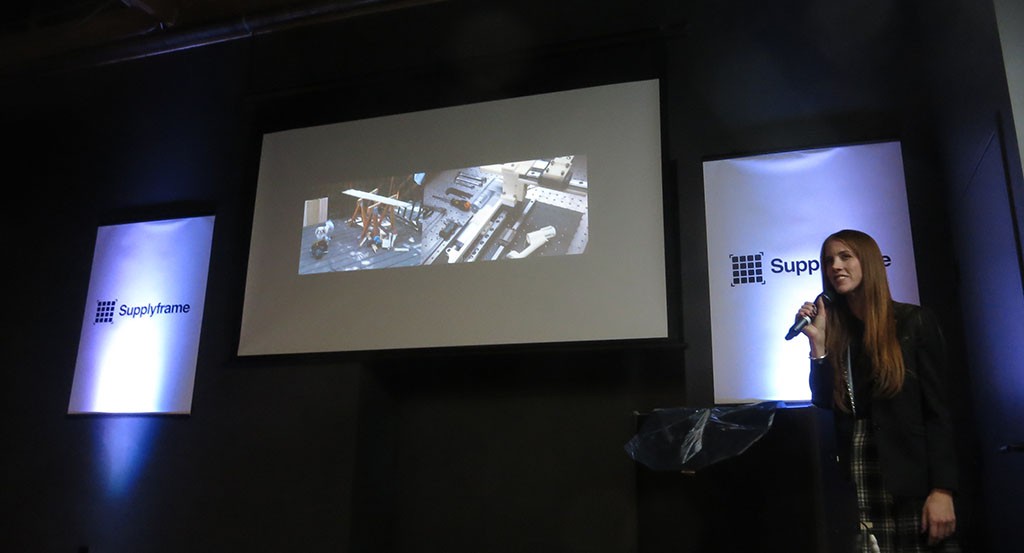
[Michelle]'s talk is available on YouTube, but hearing it in person has the bonus of seeing hardware bits up close. She passed around several intricate components that were designed for use in spacecraft but failed space flight certification for one reason or another. So now they're on their own second career as desktop fidget toy by day and Hackaday talk visual aids by night.
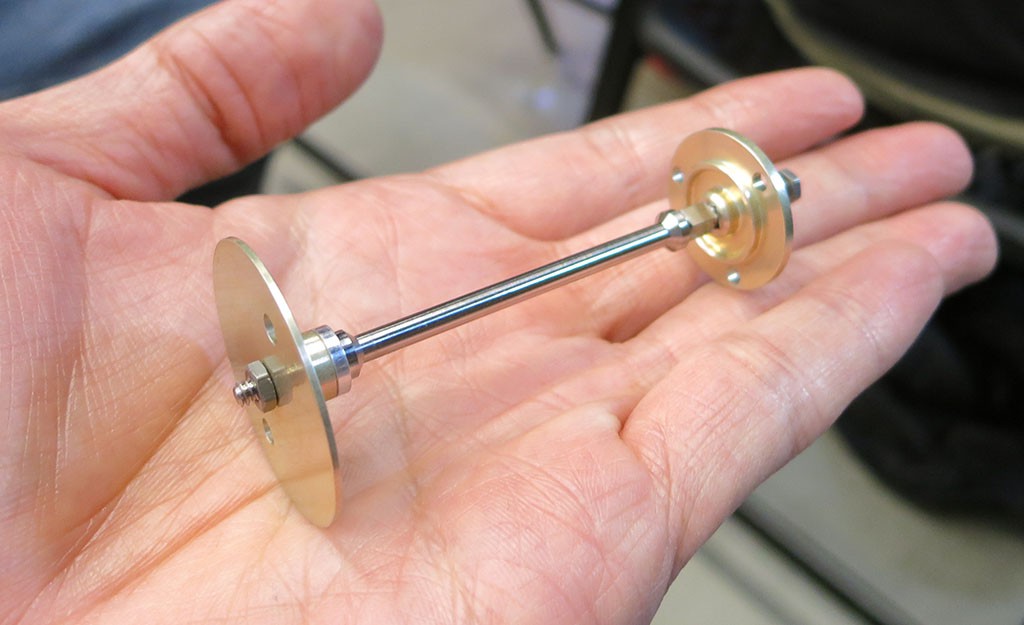
After a spacecraft is built by engineers like [Michelle], they are sent to space and cared for by flight operations engineers like [David Doody]. He talked his audience through Cassini's 20-year mission to explore Saturn. From launch to its fiery end in Saturn's atmosphere, sacrificing itself to ensure no Earth microorganisms would contaminate any Saturn moons that hold promise for extraterrestrial life. Some of these moons are among the top of the list for exploration by future space probes thanks to Cassini's discoveries.
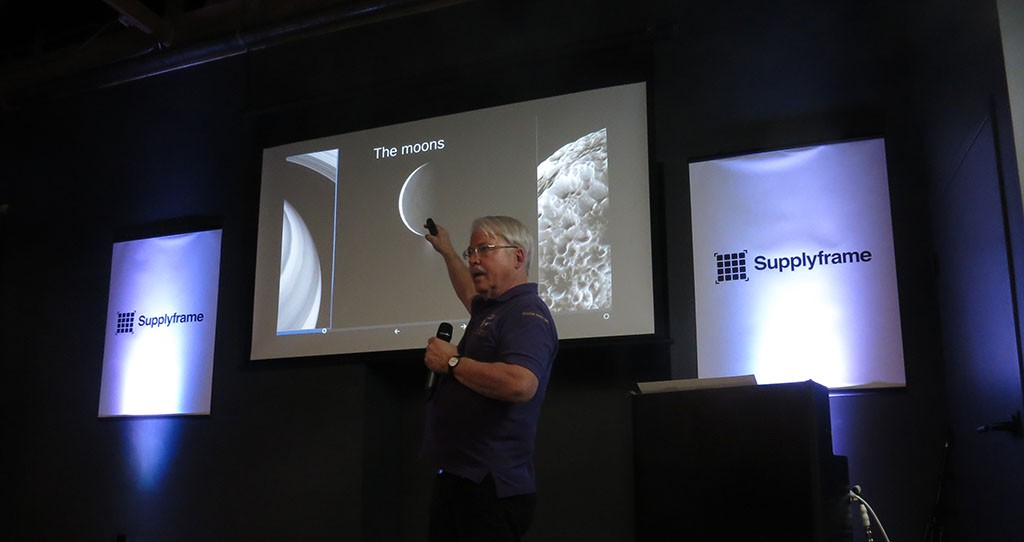
[David] also brought some goodies for people who could attend in person versus watching on YouTube. There was a poster memorializing end of Cassini (with art style inspired by Roy Lichtenstein) that attendees can take home, along with prints of pictures taken by Cassini. There was also a scale model of the probe which we were welcomed to examine but not invited to take home.

Sharing the back table with Cassini memorabilia are projects some attendees have brought to show and tell with other attendees present. These projects are always a fun part of a Hackaday LA meet.
[Boian Mitov] brought his robots for demonstrating his Visuino development environment.
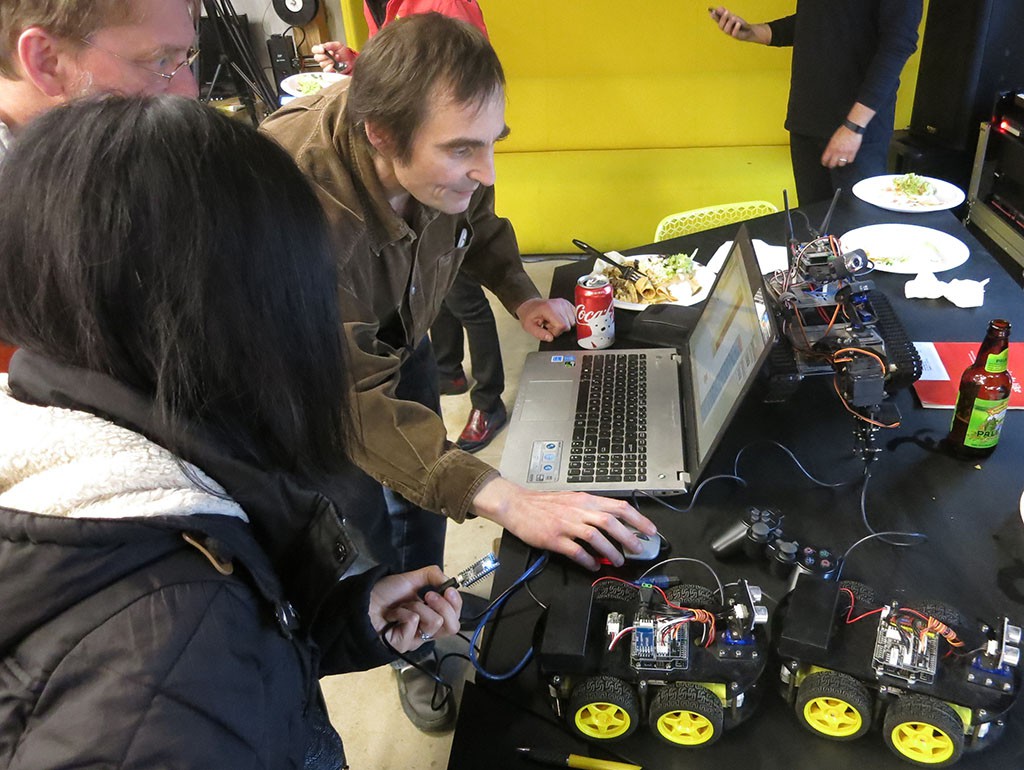
[David Shorey] returned with further evolution of his experiments 3D-printing objects fused to various flexible media.
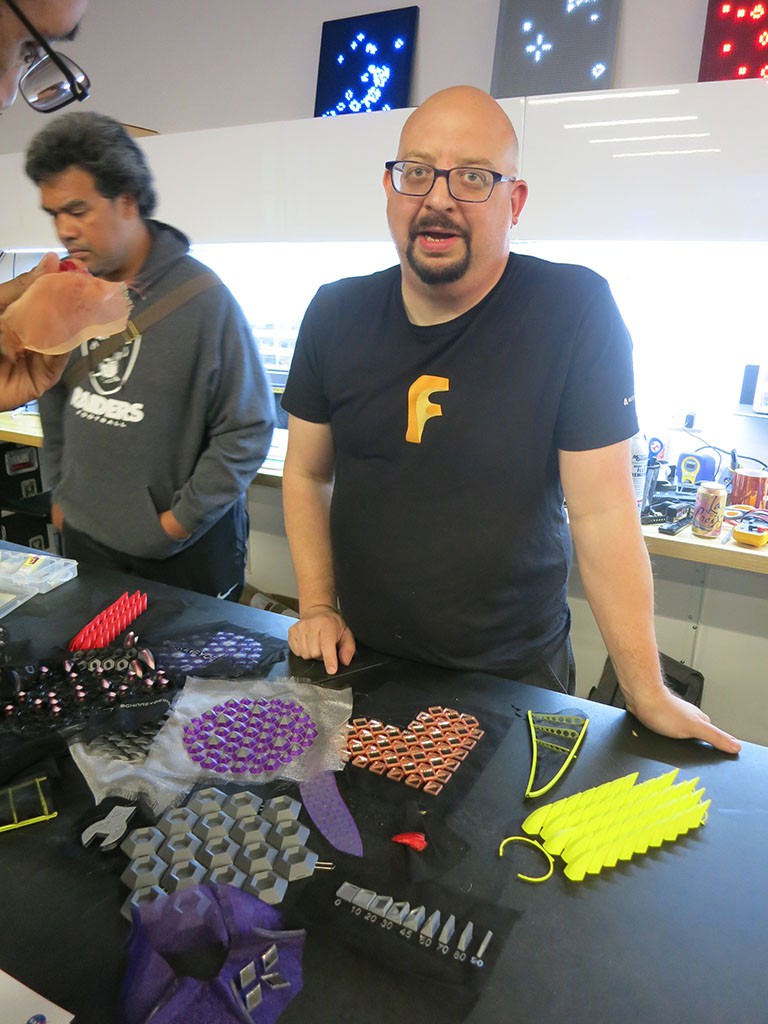
We are sad that [Lucas Rangit Magasweran] is moving away to Berlin. To salve our pain, he brought in his collection of parts and projects not going to Germany. Tubs of free hardware touched off a feeding frenzy and Lucas is happy to see hardware going home with interested hackers instead of dumped into an electronic waste collection bin.
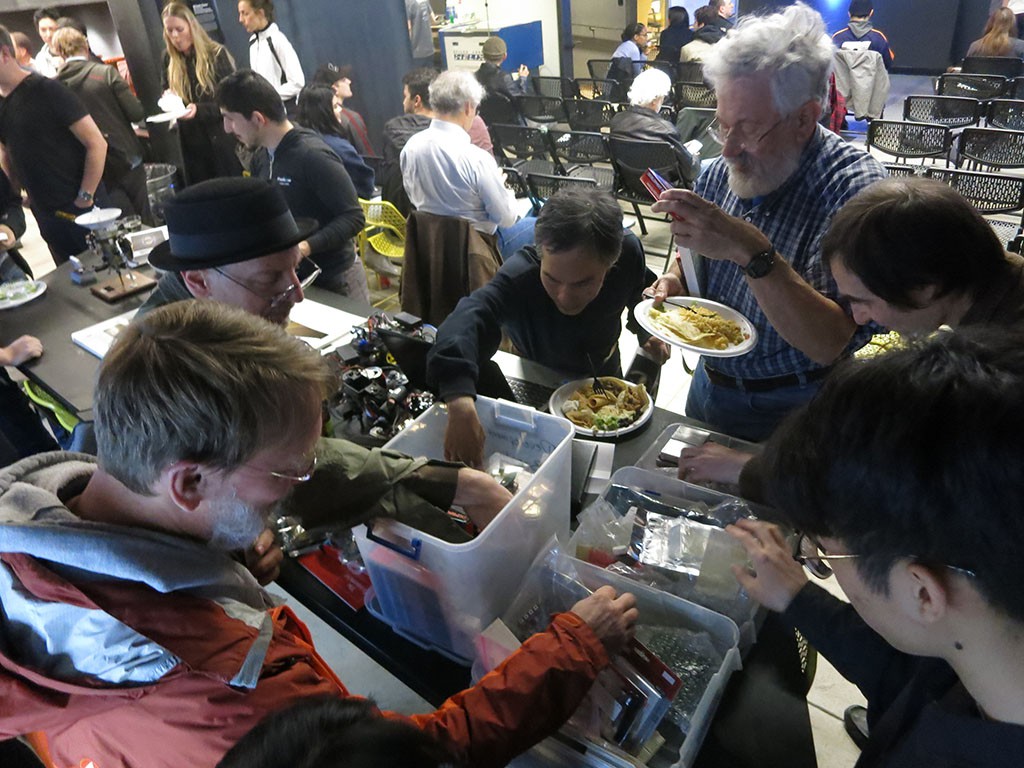
Team members of [Robodox] from Granada Hills Charter High School brought their VEX Robotics Competition entry. It emerged victorious this past weekend against other competitors from across the state. They will advance to the next round and compete for international championship. We wish them the best of luck! If anybody wants to do more than wish them luck, additional mentors and sponsors are always welcome.
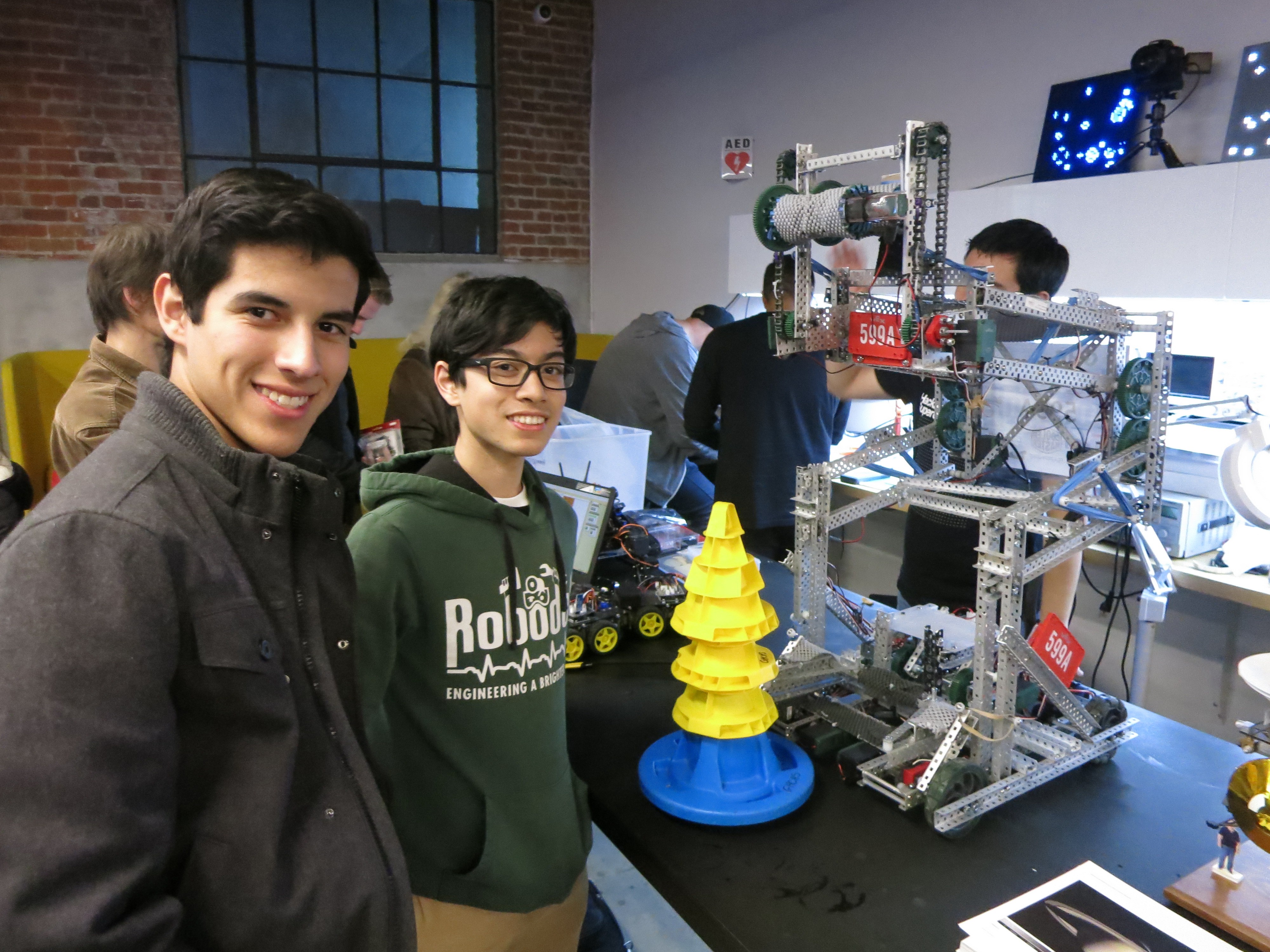
After the speakers had finished their talks, [Robodox] gave a demonstration of the robot in action. This was operated under manual control because the robot's autonomous functions were tailored to the specific game board of the competition. For more game board details see VEX Robotics Competition web site.
Want to hear from great speakers? Have a project to share with like-minded people? Come to our next meet! Keep an eye on the Hackaday LA page on meetup.com for announcements.
 Roger
Roger
Discussions
Become a Hackaday.io Member
Create an account to leave a comment. Already have an account? Log In.
Thanks for the great write-up, Roger!
Are you sure? yes | no